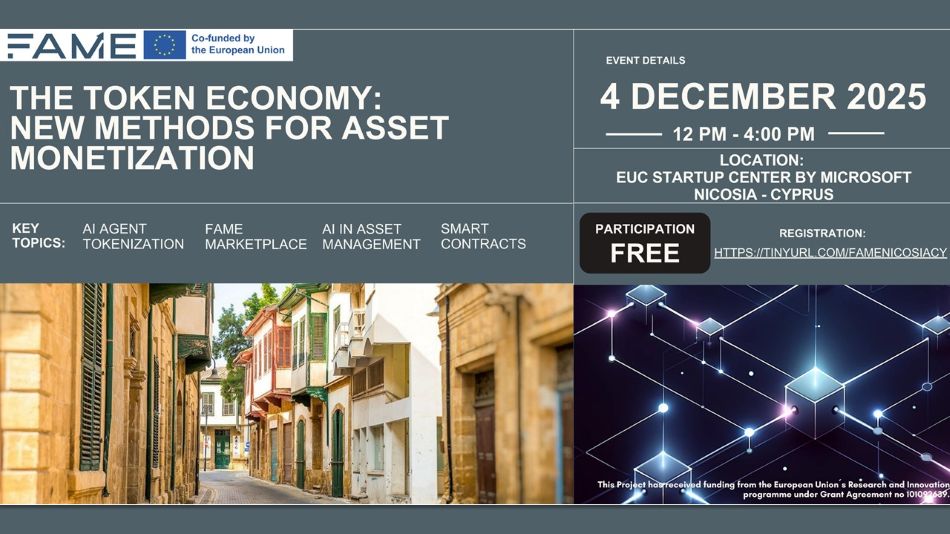More EU innovation & competitiveness with less EU market barriers
FAME embodies the EU Data Strategy by promoting the valorisation of data, and providing an incentive, and a space to make data more accessible. However, data is also fundamental to fostering growth and innovation for enhanced productivity. In light of this, and recently released policy strategies, FAME could also play an important part in the European Union’s drive for competitiveness by facilitating innovation.
Commission 2024-2029
The current European Commission have tasked itself with, amongst other:
- Enhancing the European Single Market & making business easier,
- Putting research and innovation at the heart of the European economy,
- Boosting productivity with digital tech diffusion, and
- Investing massively to improve Europe’s sustainable competitiveness [1].
In connection with these objectives, a number of new EU strategies have been release illustrating Europe’s intended approach to address, among other matters, competitiveness, innovation, productivity and sustainability.
Competitiveness Compass
The Commission aims to counter EU’s lack of competitiveness in its recent Competitiveness Compass [2] and identified a lack of innovation and inability to translate disruptive technological innovation into traditional sectors as a root cause. Innovation in Europe has been stifled by regulatory barriers and a lack of risk capital availability which has made expansion difficult for Start-ups.
The Competitiveness Compass stresses, among other things, the need to remove the barriers to innovation by, making funding more readily available to new companies, simplifying administrative procedures, and passing legislation that supports the development of (advanced) technologies. As expressed in the Draghi Report [3] on EU competitiveness:
‘Europe still has the opportunity to change track. With the world now on the cusp of another digital revolution, triggered by the spread of artificial intelligence (AI), a window has opened for Europe to redress its failings in innovation and productivity and restore its manufacturing potential.’
All hope is not lost, and this strategy is a reflection of Europe’s commitment to turn things around. In connection with the Competitiveness Compass, and as alluded to in the preceding ‘Europe’s choice’ political guidelines, a number of follow-on strategies aimed at enhancing competitiveness have been published. May 2025 saw the release of new strategies, most notably, the Single Market Strategy [4], and one for Start-ups and Scale-ups Strategy [5].
The European Single Market
The Single Market is a major source of EU prosperity, and competitiveness. However, businesses and EU citizens are unable to fully capitalize on the advantage of the European Single Market due to the persistent barriers to the free movement of goods and services. The Single Market Strategy is the EU’s answer to this dilemma and is aimed at enhancing the European Single Market. It addresses the following areas:
- Addressing numerous barriers (‘The Terrible Ten’)
- Supporting SMEs and midcaps
- Simplification and digitalisation
- Smarter governance and stronger enforcement
- Aligning investment and reform
- Shielding businesses from unfair practices
Start-Ups & Scale ups
In connection with the Competitiveness Compass, and the strategy for the Internal Market, the Start-up and Scale-up Strategy is pointed at making the conditions in Europe more attractive to tech-driven Start-ups & Scale-Ups. Innovation has been stifled by a myriad of barriers, which has led to a lack of innovation being brought to the market, developed and translated into traditional sectors (in the EU).
Thus, the Start-up & Scale Up Strategy focuses on:
- Fostering an innovation friendly environment
- Driving better financing
- Supporting market uptake and expansion
- Attracting and retaining top talent
- Facilitating access to infrastructure, network and services
Aligning with EU policy
The release of new strategies for competitiveness, the internal market and businesses signify the new Commission’s intent to act on its mandate. Europe’s competitive edge may yet be restored, with a more favourable environment for innovation and reduced internal barriers to goods and services.
By lowering the cost of access to valuable data, FAME can also play an important part in supporting the EU’s drive for competitiveness. As the barriers to innovation and growth lower for businesses, FAME can provide a meaningful contribution to European Union’s innovative potentiality, and in the financial sector. To further align with EU policy, FAME must ensure that the products it makes available within its Marketplace are supportive of the EU’s strategy for competitiveness, and to position itself appropriately within the Market as a hub of utility for businesses.
Author(s): Arthur’s Legal, Strategies & Systems
[1] Europe’s Choice: Political Guidelines for the Next European Commission (2021-2029)
[2] A Competitiveness Compass for the EU
[3] The future of European competiteness: Report by Mario Draghi.
[4] The Single Market: our European home market in an uncertain world; A Strategy for making the Single Market simple, seamless and strong.
[5] The EU Startup and Scaleup Strategy; Choose Europe to start and scale.
—
Subscribe to our newsletter for the latest updates, and follow FAME on LinkedIn and X to be part of the journey.
More info:
AL
